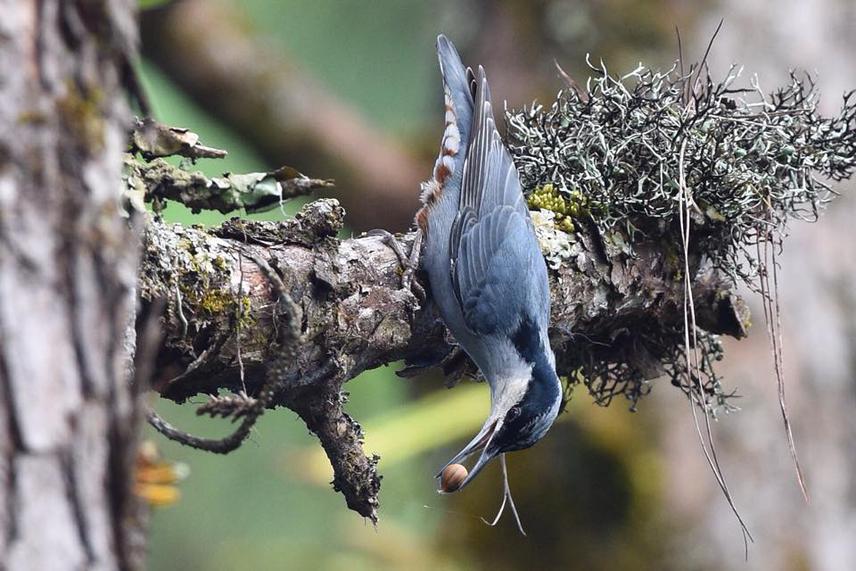Supatchaya Techachoochert
The project aim to estimate the population size and distribution of Giant Nuthatch throughout Thailand range and also would like to examine the habitat requirement of the species in order to conserve its suitable habitat.

GANH at Doi Ang Khang.
The Giant Nuthatch (Sitta magna) is an endangered species of mixed coniferous and broad-leaf forest. Its small world range encompasses southwestern China, eastern Myanmar and northern Thailand. Due to its limited range, and degradation of its habitat through logging, fuel-wood collection, shifting cultivation, and uncontrolled burning carried out by local people, and hunting the population of Giant Nuthatch is thought to have declined dramatically (to c.1,500 – 3,800 individuals). This study aims to investigate the current distribution, estimate population density, detailed habitat preferences and ecology of Giant Nuthatch.
Line transect survey will be conduct at the major study area (Chiang Dao Wildlife Sanctuary, Chiang Mai) in three different habitat types: pine forest, broadleaf forest, and mixed forest, with more than 8 repeats during the study in order to estimate the density of Giant Nuthatch. Moreover, we attempt to catch a 3-6 individuals of both sexes of Giant Nuthatch by mist netting at sites where the birds may potentially come lower to the ground (e.g. around nests or at water or food resources) and also by using of playback tape. Each bird will be fitted with a radio transmitter which is about 1.4g (less than 4% of body weight as recommended) at the back by harness method. Bird movement will be located by using triangulation method.
Distribution and population size estimation will be conduct by occupancy survey through more than 30 possible sites in Thailand; including Chiang Mai, Chiang Rai, and Mae Hong Son province. Playback counts will be performed in order to confirm the presence/absence of bird in the area. Moreover, signs of habitat degradation or other disturbance will also be noted. Combining with remote sensing data analysis, we will able to estimate population size and suitable habitat of the species.
The study was planned to implement in 2 breeding season from November 2014 – June 2016.